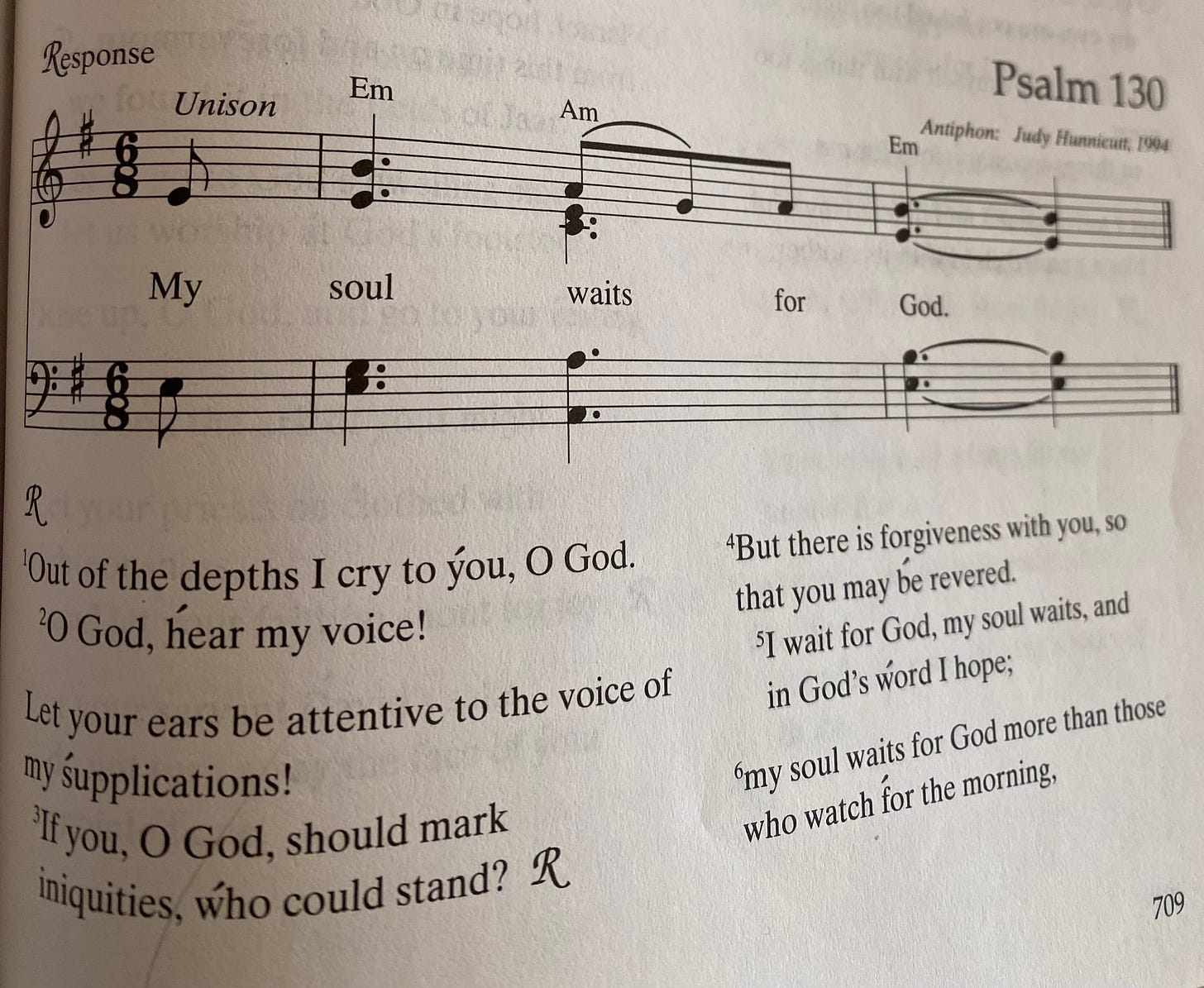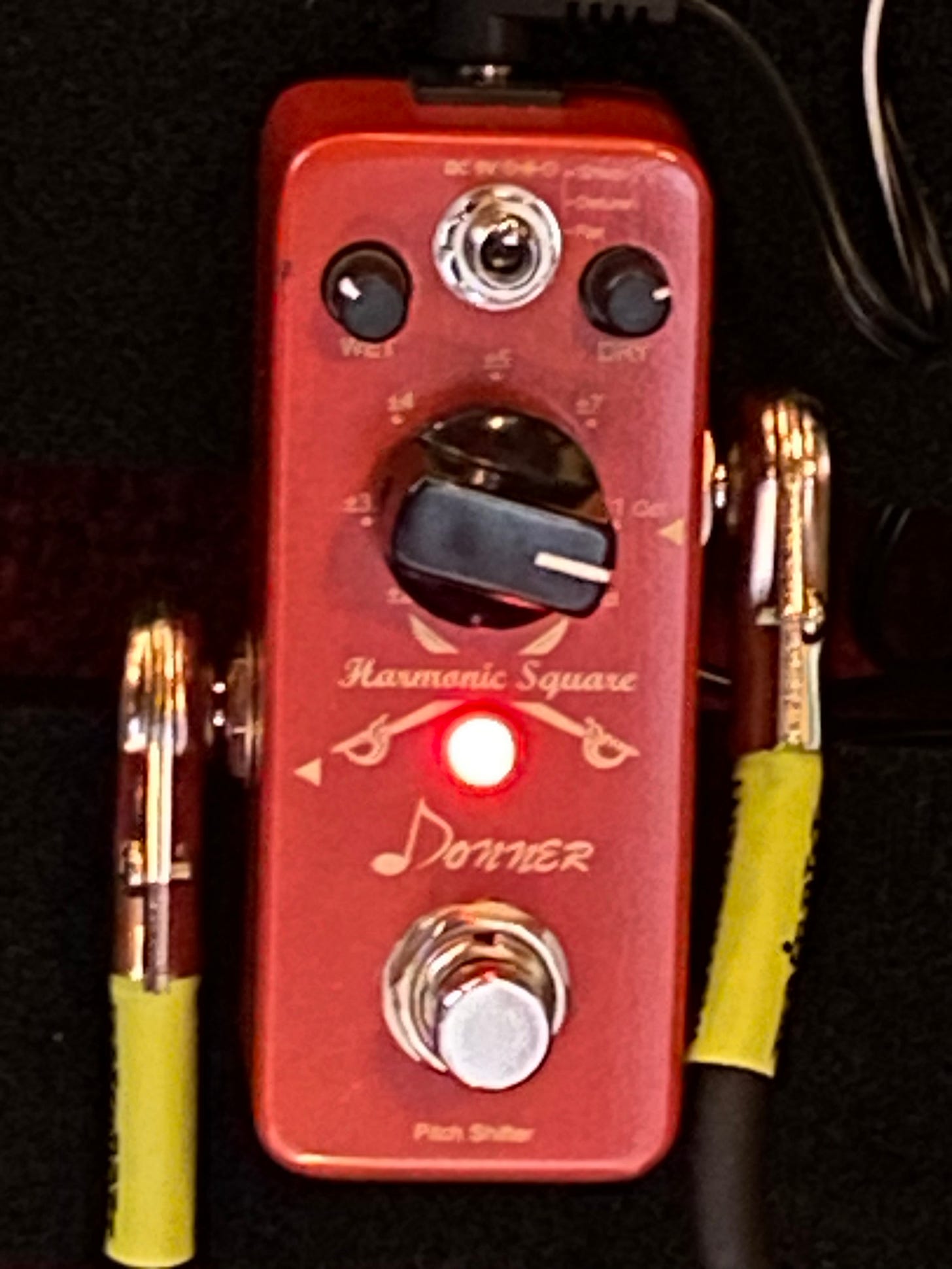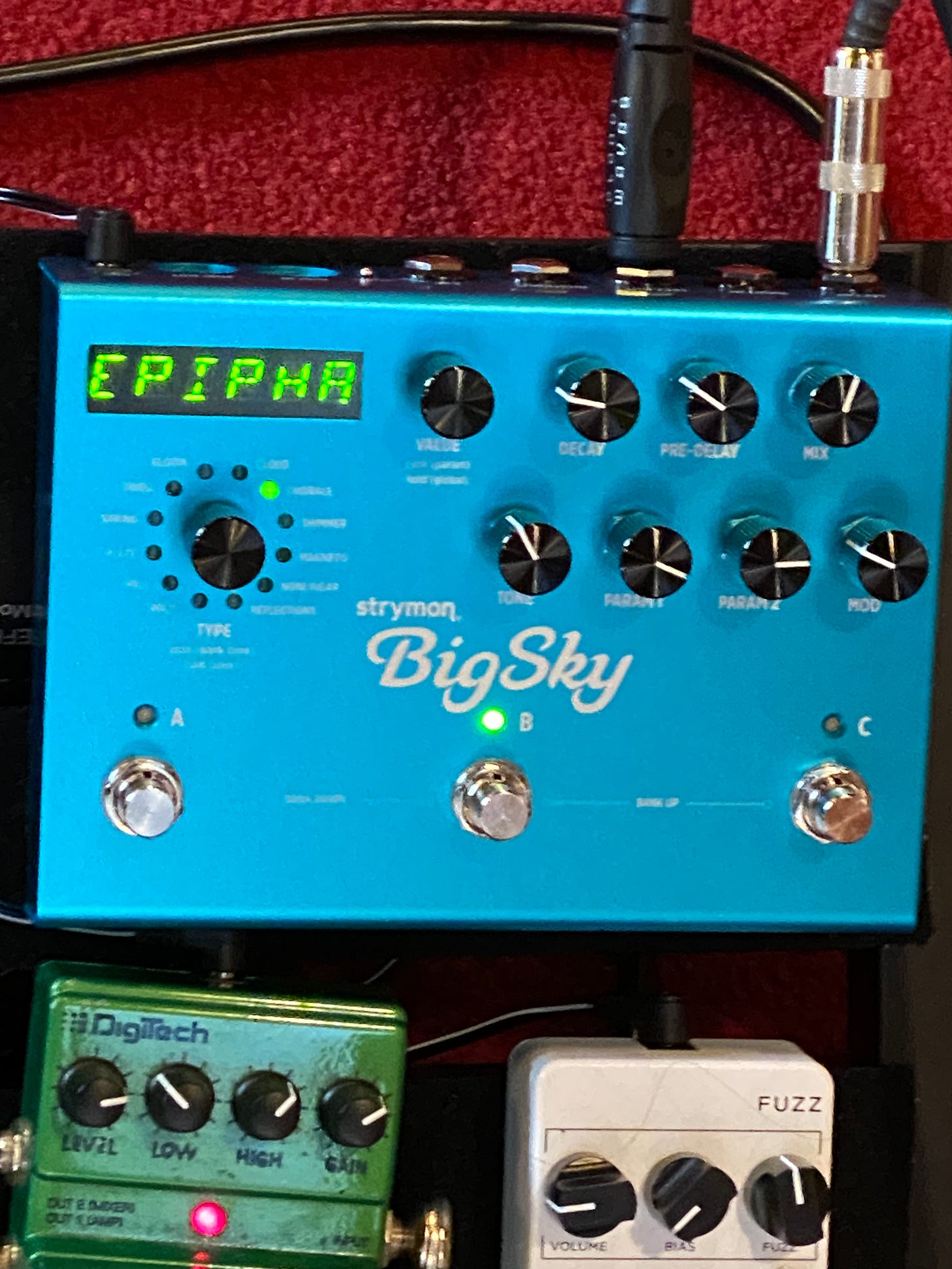A Gregorian Chant-Inspired Electric Guitar Tone
Try it with Psalms and ancient hymns
When I first started attending my UCC church over a decade ago, we sang a Psalm every week. The New Century Hymnal has a Psalter section with short, sung refrains and markings over the verses for chanting. I’d never chanted in church before or heard much religious chanting at all, and the melody we used for the chants was absolutely gorgeous. I loved it.
Over the years, our practice with the Psalms has changed. We now speak the verses instead of chant them, and we don’t sing a Psalm response every single week. Though I miss the chanting sometimes, I can understand how it may be too difficult for the average non-musical congregant to follow. It took me a few services to realize that the little accent mark over a word in the verse indicates when the melody shifts, and those shifts aren’t spaced out evenly. However, I enjoy the sound of ancient/medieval Christian chanting–the eerie drones and parallel fifths and fourths that envelope you into contemplating whatever aspect of God or faith the chant is about.
In a genre-expansive approach to church music, we should consider embracing music we’ve previously excluded, but not disparage or entirely do away with our musical starting point. So for a recent service where I played on a Psalm response, I asked myself, “What if I tried a Gregorian chant-like tone?” I wanted to see if I could take some element of what I missed–the chanting–and place it into my sound for accompanying the piano on the sung response.

I came up with something that worked pretty well and perhaps this idea will help other electric guitar players in churches like mine (mainline progressive Protestant). By not being in the Bethelvation Hill ecosystem, it can sometimes be difficult for us electric guitar players to apply the techniques and sounds we hear from that world in our own contexts. Although this type of sound I dialed in probably appears in much of that music, I got there by primarily thinking of a much older Christian tradition.
Electric Guitar as an Ambient Pad
Approaching electric guitar as a pad works just as well for traditional hymns as it does for the Bethelvation Hill sound. It’s especially helpful in churches that are more settled in classical music–the pianist/organist is probably playing everything in a song. This means that electric guitar players don’t have to play everything, so the pad approach is a simple way for us to add to the texture of a hymn. To get a pad-like sound, you need a long delay and/or reverb. You could also use a volume pedal or some other method to create swells.
Because I wanted to capture the vibe of chanting in my sound, I used a chorale reverb on my Big Sky and a pitch shifter set to one octave above. I also had some light overdrive and used the neck pickup of my guitar with the tone rolled back. The resulting sound is reminiscent of deep voices in a cave or cathedral. The Psalm response for which I created this sound is in a minor key, expressing the idea of waiting for God amidst suffering, so this eerie sound captures that feeling.

Ringing Arpeggios
A sound like this lends itself to single notes or diads rather than full chords. On this Psalm, I outlined the chords using a combination of open strings and fretted notes, plucking almost as if I was playing a harp.
(Note: This sample was recorded at home, not during church.)
Now, this would never be mistaken for actual voices. It simply captures the essence of chanting in the way an electric guitar would. However, this line of thinking shows how electric guitar players in organ-piano-choir-based churches can find our way to bring a new sound to what our congregations already know.
If you’re in a mainline church like the UCC and have been unsure about how an electric guitar can fit into your music program, keep this guitar-as-pad approach in mind. It sounds beautiful and it isn’t very difficult to play. This type of sound I described here blends the familiar with the new, and if you’re worried about this coming across as too Bethelvation-like, well, while it’s true this type of sound is common in that world, I don’t see them singing Psalm responses a la the New Century Hymnal.




